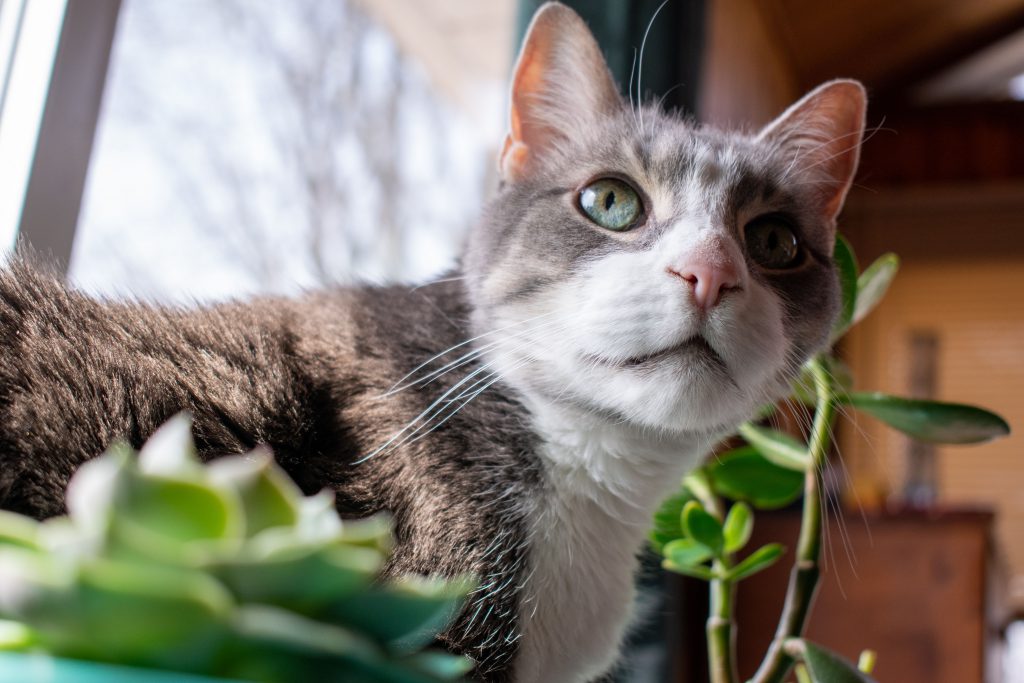
Am I putting my pet in danger with my houseplants?
There’s nothing quite like the joy of having both pets and houseplants to brighten up our homes. My boxer, Octavia, and my cat, Catrina, bring so much happiness and energy to my life. However, as a pet owner and a plant enthusiast, I understand the importance of ensuring my leafy friends are safe for my furry companions. This article is the ultimate guide to pet-safe houseplants; dedicated to helping you find houseplants that are not only beautiful and easy to care for but also non-toxic to pets.
It’s crucial to be aware that some common houseplants can be toxic to dogs and cats. Ingesting these plants can lead to a range of health issues for our pets, from mild irritation to serious health complications, and in severe cases, it can be fatal. Knowing which plants are safe can prevent these scary scenarios and keep both your plants and pets thriving harmoniously.
In this article, we’ll explore why certain houseplants are harmful to pets and provide a curated list of easy-to-care-for, pet-safe options. Whether you’re a seasoned plant parent or a newbie looking to green up your space without risking your pets’ health, this guide is here to help you create a safe and vibrant home environment. Let’s dive in and discover how you can enjoy the best of both worlds!
The Dangers of Toxic Houseplants
As a plant lover and pet parent, understanding plant toxicity is essential to keeping my furry friends safe. Some houseplants contain toxic compounds like calcium oxalates, saponins, and alkaloids that can cause severe health issues for pets. I’m absolutely NOT a vet, so if you ever worry about your pet’s health, please consult a professional immediately.
Symptoms of plant poisoning in pets can vary but commonly include vomiting, diarrhea, lethargy, and loss of appetite. It’s vital to recognize these signs and act quickly to prevent serious harm.
Several common houseplants are notorious for being toxic to pets. For example, lilies can cause kidney failure in cats. Philodendrons contain calcium oxalate crystals that can irritate your pet’s mouth and digestive system. Aloe vera, while beneficial for humans, can induce vomiting and diarrhea in pets due to its saponin content. Lastly, pothos (devil’s ivy), a popular low-maintenance plant, can cause oral irritation and swelling in pets if ingested.
By understanding these dangers, we can make informed choices about the plants we bring into our homes, ensuring a safe environment for our beloved pets.
Identifying Pet-Safe Houseplants
When you’re looking to buy a houseplant, it’s crucial to research which plants are pet-safe before bringing them home. One invaluable resource for identifying pet-safe plants is the ASPCA’s (American Society for the Prevention of Cruelty to Animals) list of toxic and non-toxic plants. This comprehensive database helps you check whether a particular plant is safe for your pets. Similarly, the Ontario SPCA and Humane Society provide a list of flowers and plants that are not safe for pets. Utilizing these resources can help you make informed decisions and avoid bringing harmful plants into your home.
Labels and plant tags can also be helpful, but they are not always reliable or comprehensive. Therefore, cross-referencing with trusted resources like the ASPCA or Ontario SPCA is a good practice. When in doubt, it’s always best to consult with your veterinarian. They can provide personalized advice based on your pet’s health and specific needs.
Understanding plant toxicity is essential to keeping your pets safe. Toxic compounds in some plants, such as calcium oxalates, saponins, and alkaloids, can cause severe health issues. Symptoms of plant poisoning in pets can include vomiting, diarrhea, lethargy, and loss of appetite. Recognizing these signs and acting quickly is crucial to prevent serious harm.
For instance, lilies, which are beautiful but dangerous, can cause kidney failure in cats, even if the dust from their flowers falls. By thoroughly researching and consulting with experts, we can make our homes safe havens for our beloved pets and beautiful houseplants. This way, we can enjoy the best of both worlds without compromising our pets’ health and safety.

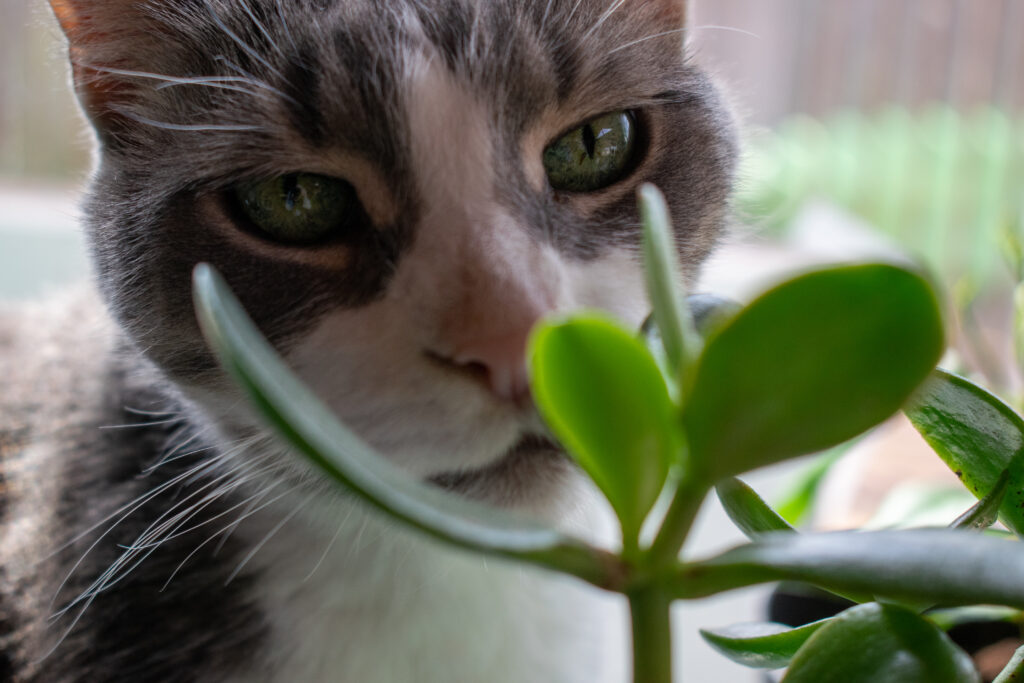
Top Pet-Safe Houseplants
Bringing houseplants into your home can create a vibrant and soothing environment. However, as a pet owner, it’s crucial to choose plants that are safe for your furry friends. Here’s a list of 10 pet-safe houseplants along with detailed care instructions to help you create a beautiful and safe indoor garden.
1. Spider Plant – Spider plants are incredibly easy to grow and adapt to various conditions. They thrive in bright, indirect light but can also tolerate low light. Water them moderately, allowing the soil to dry out between waterings. Note that spider plants can be mildly hallucinogenic for cats, causing them to nibble on the leaves, so it’s best to place them out of reach if possible.
2. Boston Fern – Boston ferns are perfect for adding a touch of greenery to your home. They prefer high humidity and indirect light, making them ideal for bathrooms or kitchens. Keep the soil consistently moist but not waterlogged. Regular misting can help maintain the humidity they love.
3. Areca Palm – Areca palms are known for their feathery, arching fronds and are excellent for brightening up a room. They prefer bright, indirect light and like their soil to be kept evenly moist. During the growing season, water them frequently, but reduce watering in winter.
4. Calathea – Calatheas are known for their stunning leaf patterns. They thrive in low to medium light and prefer their soil to be kept moist but not soggy. High humidity is crucial for calatheas, so regular misting or placing a humidifier nearby can be beneficial.
5. Parlour Palm – Parlour palms are low-maintenance plants that do well in low light and with infrequent watering. They prefer their soil to dry out slightly between waterings. These palms are perfect for offices or rooms with limited natural light.
6. African Violet – African violets are small, colourful plants that prefer bright, indirect light. They thrive with moderate watering, ensuring the soil stays moist but not waterlogged. Avoid getting water on the leaves to prevent spotting.
7. Peperomia – Peperomias are versatile plants that thrive in indirect light and require moderate watering. Allow the soil to dry out between waterings to prevent root rot. Their varied leaf shapes and colours make them an attractive addition to any home.
8. Baby Rubber Plant – The baby rubber plant is a low-maintenance option that prefers indirect light and infrequent watering. Let the soil dry out completely between waterings. Its thick, glossy leaves add a lush feel to any room.
9. Moon Valley Pilea – Moon Valley Pileas are known for their textured leaves and thrive in medium light and a humid environment. Keep the soil consistently moist but not waterlogged. Regular misting can help maintain the humidity levels they prefer.
10. Ponytail Palm – Ponytail palms are unique plants that prefer bright light and have low watering needs. Allow the soil to dry out completely between waterings. They are drought-tolerant, making them an excellent choice for busy or forgetful plant parents.
Easy-to-Care-For Pet-Safe Houseplants
If you’re a busy pet owner like me, finding low-maintenance, pet-safe houseplants is a game-changer. These plants not only add beauty to your home but also require minimal care, making them perfect for anyone with a hectic schedule or a less-than-green thumb.
Why Low-Maintenance Plants Are Ideal
Low-maintenance plants are incredibly easy to care for because they can tolerate a range of conditions and don’t require constant attention. Here are some key reasons why these plants are perfect:
- Watering: Low-maintenance plants generally don’t need frequent watering. Many can go for extended periods without water, making them ideal for forgetful gardeners or those who travel often. For example, the Ponytail Palm only needs to be watered when the soil is completely dry, which can be as infrequent as every 2-3 weeks.
- Light Tolerance: These plants can adapt to various light conditions, from bright indirect light to low light. The Parlor Palm is an excellent example, thriving in low-light conditions and only requiring occasional watering.
- Hardiness: Low-maintenance plants are hardy and can withstand less-than-ideal conditions. They are less prone to pests and diseases, reducing the need for constant monitoring and care.
Top Low-Maintenance, Pet-Safe Houseplants
Here are some of my favorite low-maintenance, pet-safe houseplants:
- Spider Plant: Known for its air-purifying qualities, the Spider Plant is very resilient. It tolerates a variety of conditions and needs watering only when the soil is dry. However, it can be mildly hallucinogenic for cats, so try to keep it out of their reach.
- Ponytail Palm: With its drought-tolerant nature, the Ponytail Palm is perfect for those who often forget to water their plants. It prefers bright light but can adapt to lower light levels.
- Peperomia: These small, attractive plants thrive in indirect light and need only moderate watering. Let the soil dry out between waterings to prevent root rot.
- Baby Rubber Plant: This plant is very forgiving and does well with indirect light and infrequent watering. It’s an excellent choice for busy pet owners.
A Note of Caution
Even though these plants are pet-safe, it’s important to remember that eating anything that isn’t food can upset your pet’s stomach. While these plants won’t cause severe harm, they can still lead to minor digestive issues if ingested. Always try to discourage your pets from nibbling on your plants. You can do this by placing the plants out of reach or using pet deterrents.
By choosing these easy-to-care-for, pet-safe houseplants, you can enjoy the beauty of greenery in your home without worrying about the safety of your pets. Happy planting!
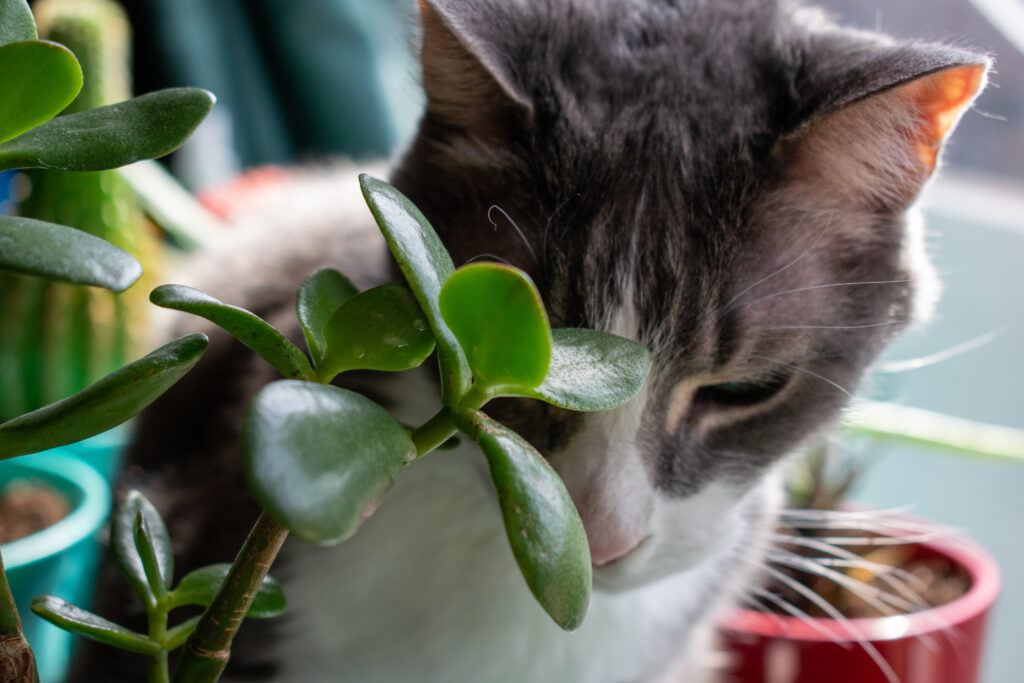
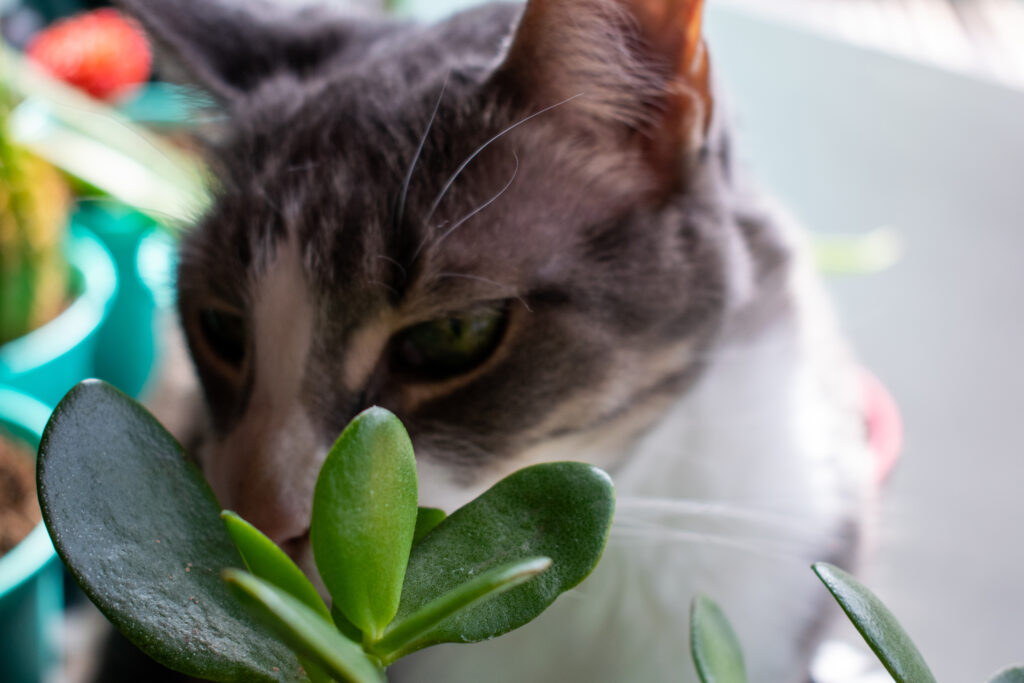
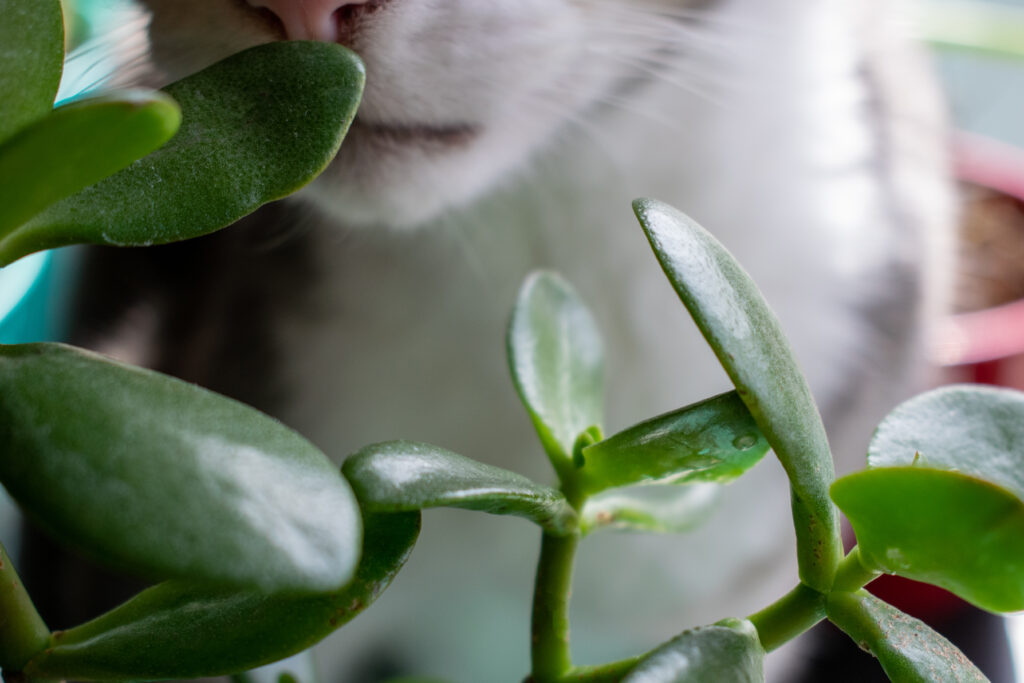
Creating a Pet-Friendly Indoor Garden
Creating a pet-friendly indoor garden involves more than just selecting safe plants; the environment you create is equally important. As a pet owner, I know how curious pets can be, and ensuring that plants and pets coexist harmoniously takes a bit of planning and creativity.
The placement of your plants is crucial. Elevating plants can help keep them out of reach from playful paws. Consider using shelves, high tables, or wall-mounted planters to elevate your greenery. One of my personal strategies is ensuring there’s no landing space for my pets. For instance, if a cat has nowhere to land after a jump, it’s much less likely to attempt reaching that tempting plant. Hanging plants are also a fantastic option. They not only add a beautiful dimension to your indoor garden but also keep plants safely out of reach. Wall-mounted planters can turn any blank wall into a lush, green feature, and they are generally safe from both dogs and cats.
Using plant stands is another effective method. They come in various heights and styles, making it easy to find one that fits your décor and keeps plants away from curious pets. Grouping plants on a single stand or a cluster of different stands can create a striking display while ensuring your plants are safely elevated.
Working with your pets
Training your pets to avoid plants can be challenging, especially with cats. For dogs, basic training techniques like teaching the “leave it” command can work wonders. Consistency and positive reinforcement are key. With cats, it’s often more about prevention. Make sure they never get the chance to start playing with or chewing on plants. If a cat learns early on that plants are off-limits, they’re less likely to be interested in them later. This can be achieved by initially placing plants in areas that are entirely inaccessible to them and gradually moving them to more visible spots once the habit of ignoring plants is established.
Using deterrents can also help. Citrus sprays or placing orange peels around the base of plants can be effective since cats generally dislike the smell. For dogs, providing plenty of chew toys and distractions can keep their attention away from your plants.
By thoughtfully considering the environment and using strategic placement and training techniques, you can create a thriving indoor garden that coexists peacefully with your pets. This approach not only ensures the safety of your beloved pets but also helps your plants flourish in a harmonious home.
Conclusion – Pet-Safe Houseplants
As we wrap up, it’s important to remember that if your pet eats something they shouldn’t, contact your vet immediately. If you notice any symptoms like vomiting, diarrhea, or lethargy, you may need to reach out to an emergency vet. Prompt action can make all the difference in ensuring your pet’s health and safety.
Maintaining your plants regularly is key to ensuring a safe environment. Regularly check for dead leaves or fallen debris that might attract your pets. Keep the soil healthy and free from pests, and monitor your plants’ health to prevent any issues that might make them more appealing to curious pets.
Choosing pet-safe houseplants is crucial in creating a harmonious home for both your greenery and your furry friends. Not only does it keep your pets safe, but it also gives you peace of mind knowing that your home is a secure environment for all. Exploring and experimenting with different pet-safe plants can be a fun and rewarding experience. There are so many beautiful and easy-to-care-for options out there, and you might discover new favourites along the way.
I encourage you to share your own tips and experiences. Whether you have creative placement ideas, training successes, or favourite pet-safe plants, I’d love to hear from you. Feel free to comment below or reach out to me on Instagram @savage__gardener. Your insights and stories can help fellow pet and plant lovers create safe and beautiful homes.
Thank you for joining me on this journey to find the perfect pet-safe houseplants. Here’s to happy pets, thriving plants, and a harmonious home!
Discover more from Savage Gardener
Subscribe to get the latest posts sent to your email.
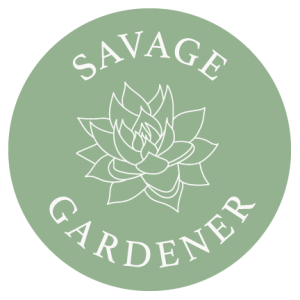
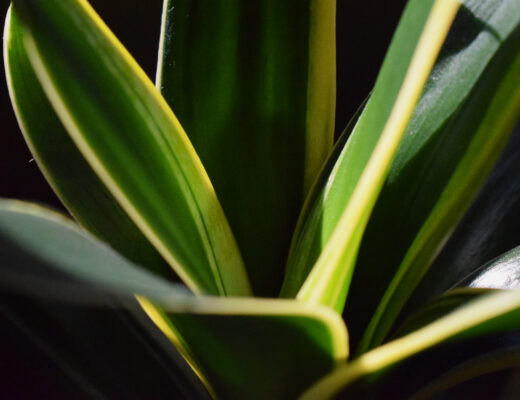
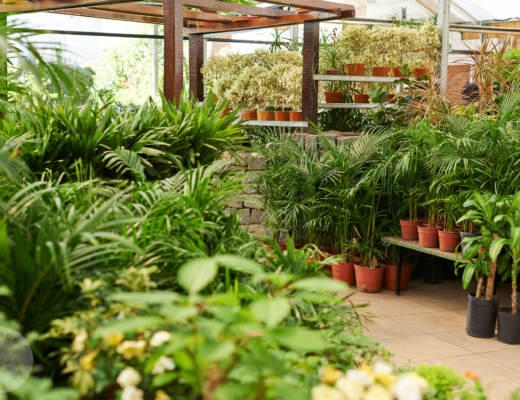
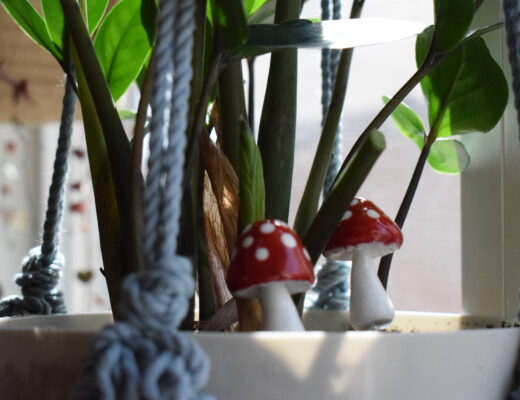
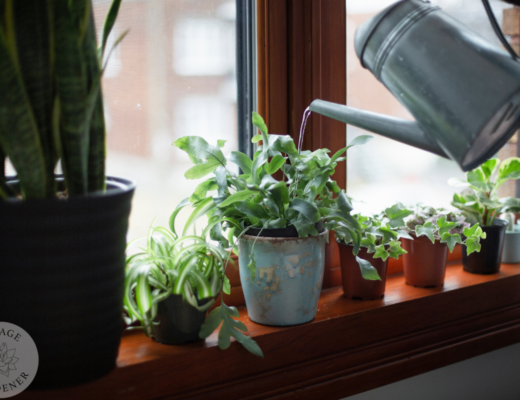

No Comments